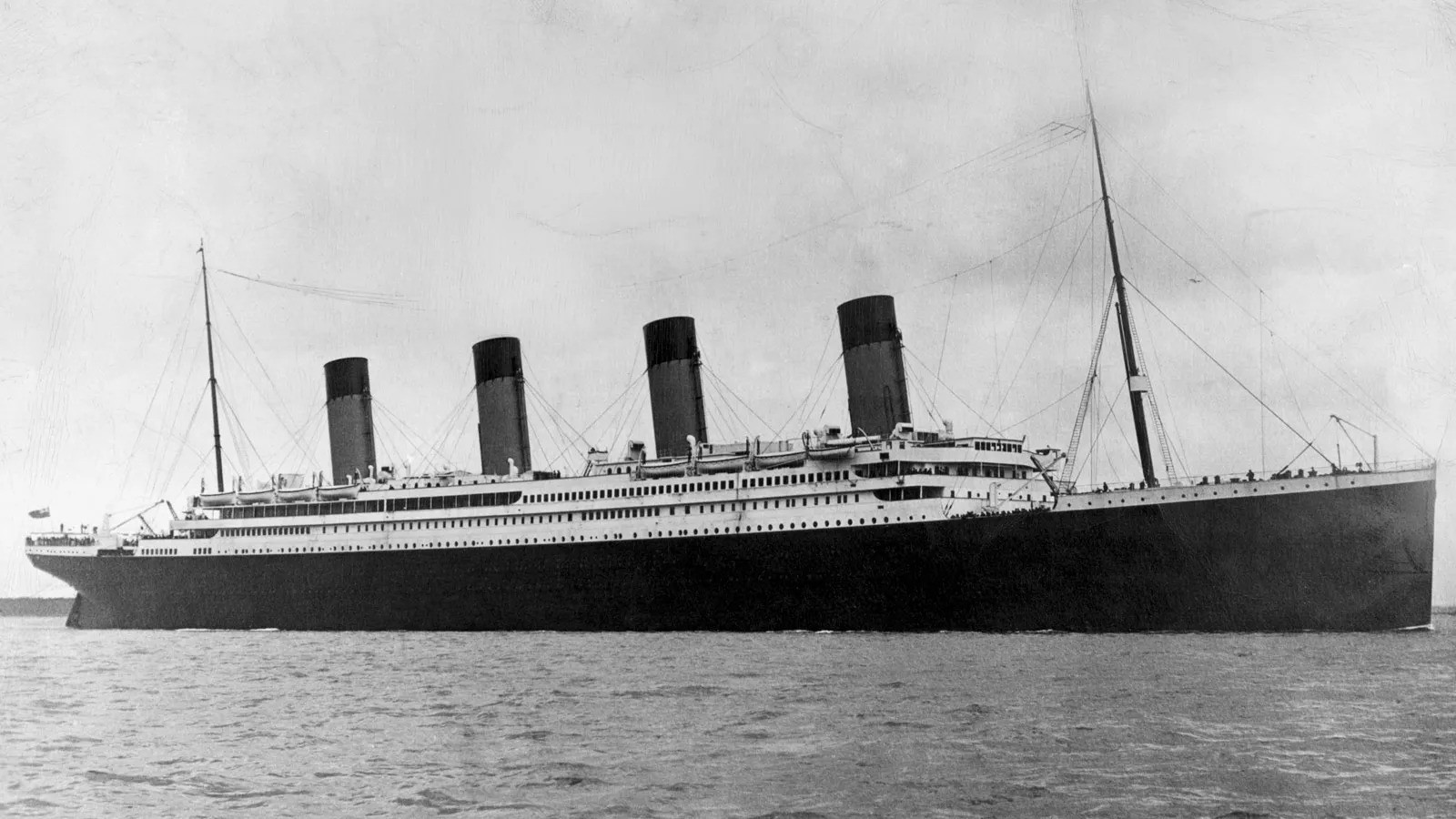The Titanic's Tragic Voyage - The Day The Unsinkable Sank
Explore the fateful journey of the Titanic, the ship deemed unsinkable. Learn about the events leading to its tragic sinking, the stories of those on board, and the lasting impact on maritime history.
Author:Callum FraserMar 27, 202418.4K Shares401.3K Views

The sinking of the RMS Titanic is one of the most well-known maritime disasters in history, capturing the world's attention and leaving an enduring legacy. This article delves into the details of the day the Titanic sank, exploring the events leading up to the disaster, the aftermath, and the profound impact it had on maritime safety. By the end of this comprehensive guide, readers will have a thorough understanding of the Titanic's tragic voyage and its historical significance.
Setting The Stage: The Titanic's Maiden Voyage
Construction And Specifications
The RMS Titanic was a British passenger liner operated by the White Star Line. It was constructed at the Harland and Wolff shipyard in Belfast, Northern Ireland, and was one of the largest and most luxurious ships of its time.
Specifications:
- Length: 882 feet 9 inches
- Beam: 92 feet 6 inches
- Gross Tonnage: 46,328 GRT
- Decks: 9
- Passenger Capacity: 2,435 passengers and 892 crew members
The Promise Of Safety
The Titanic was touted as "unsinkable" due to its advanced safety features, including 16 watertight compartments and remotely activated watertight doors. However, it only carried enough lifeboats for about half of those on board, in line with the regulations of the time.
The Maiden Voyage Begins
The Titanic set sail on its maiden voyage from Southampton, England, to New York City on April 10, 1912. It made stops at Cherbourg, France, and Queenstown (now Cobh), Ireland, before heading across the Atlantic with approximately 2,224 passengers and crew on board.
The Fateful Night: April 14-15, 1912
Iceberg Warnings
During its journey, the Titanic received multiple iceberg warnings from other ships in the vicinity. Despite these warnings, the ship continued to travelat near maximum speed, a decision influenced by the desire to make a swift and successful maiden voyage.
Collision With The Iceberg
At approximately 11:40 PM on April 14, 1912, lookout Frederick Fleet spotted an iceberg directly ahead of the Titanic. Despite efforts to maneuver around it, the ship struck the iceberg on its starboard side, causing a series of ruptures below the waterline.
Impact Details:
- The iceberg tore a 300-foot gash in the hull, compromising five of the ship's watertight compartments.
- Water began flooding the compartments at an alarming rate, making it clear that the Titanic was doomed.
The Sinking Process
Over the next few hours, the Titanic's bow began to sink lower into the icy Atlantic waters, while the stern lifted high into the air. The ship's design, which allowed for watertight compartments, ironically led to a faster sinking as water spilled over the tops of bulkheads.
Evacuation And Lifeboats
The evacuation process was chaotic and insufficient due to a lack of lifeboats and inadequate crew training. Lifeboats were launched half-filled, and many passengers were left to fend for themselves as the ship sank.
Key Points:
- The Titanic had 20 lifeboats, enough for only 1,178 people.
- Women and children were given priority, though many men and crew members also made it into lifeboats.
The Final Moments
At around 2:20 AM on April 15, 1912, the Titanic broke apart and disappeared beneath the waves, leaving over 1,500 people stranded in the freezing waters. The survivors clung to lifeboats and debris, waiting for rescue.
The Aftermath Of The Disaster
Rescue By The RMS Carpathia
The RMS Carpathia, which was approximately 58 miles away when the Titanic sent out distress signals, arrived on the scene at around 4:00 AM. The Carpathia rescued 705 survivors, bringing them to safety in New York.
Global Reaction
News of the Titanic's sinking shocked the world. The disaster highlighted the inadequacies of maritime safety regulations and led to an outpouring of grief and support for the victims and their families.
Investigations And Changes
The sinking prompted comprehensive investigations by both British and American authorities. These inquiries resulted in significant changes to maritime safety laws, including:
- The International Convention for the Safety of Life at Sea (SOLAS): Established in 1914 to ensure ships had sufficient lifeboats and safety drills.
- Continuous Radio Watches: Mandated for all ships to ensure timely communication of distress signals.
- Ice Patrol: The establishment of the International Ice Patrol to monitor and report on iceberg activity in the North Atlantic.
The Titanic's Legacy
Cultural Impact
The story of the Titanic has been immortalized in books, films, and documentaries. James Cameron's 1997 film "Titanic" brought the story to a new generation, emphasizing the human drama and heroism of the event.
Memorials And Museums
Numerous memorials and museums around the world honor the memory of the Titanic and its passengers. The Titanic Belfast museum, located at the shipyard where the Titanic was built, is one of the most notable, offering detailed exhibits on the ship's construction, voyage, and sinking.
Ongoing Exploration
The wreck of the Titanic, discovered in 1985 by Robert Ballard, continues to fascinate explorers and researchers. Ongoing expeditions aim to learn more about the ship and preserve its legacy for future generations.
FAQs About What Day Did The Titanic Sink
What Was The Exact Date And Time The Titanic Sank?
The Titanic sank in the early hours of April 15, 1912, at approximately 2:20 AM, after striking an iceberg at around 11:40 PM on April 14, 1912.
How Many People Survived The Titanic Disaster?
Approximately 705 people survived the sinking of the Titanic. The RMS Carpathia rescued these survivors and brought them to New York.
Why Didn't The Titanic Have Enough Lifeboats?
The Titanic complied with the maritime safety regulations of the time, which were based on the ship's gross tonnage rather than its passenger capacity. These outdated regulations did not account for the Titanic's large number of passengers and crew.
What Were The Key Changes In Maritime Safety After The Titanic Disaster?
The Titanic disaster led to significant changes in maritime safety, including the International Convention for the Safety of Life at Sea (SOLAS), mandatory continuous radio watches, and the establishment of the International Ice Patrol.
Where Is The Wreck Of The Titanic Located?
The wreck of the Titanic is located about 370 miles south-southeast of Newfoundland, Canada, at a depth of approximately 12,500 feet (3,800 meters) in the North Atlantic Ocean.
Conclusion
The sinking of the Titanic on April 15, 1912, remains one of the most poignant and impactful maritime disasters in history. This tragic event not only highlighted the vulnerabilities of early 20th-century maritime travel but also led to significant advancements in safety regulations that continue to protect lives today. By understanding the details and legacy of the Titanic's fateful voyage, we honor the memory of those who perished and acknowledge the enduring lessons learned from this catastrophe.

Callum Fraser
Author
Callum Fraser isn't just a writer about Scotland; he's a product of its rugged landscape and rich history. Born and raised in Perthshire, with the Highlands as his backyard, his love for the nation's stories was kindled by local storytellers and long walks through ancient glens.
This passion led him to pursue a degree in Scottish History from the University of Edinburgh. For over 15 years, Callum has dedicated himself to exploring and documenting his homeland, fusing his academic knowledge with essential, on-the-ground experience gained from charting road trips through the Cairngorms, hiking the misty Cuillins of Skye, and uncovering the secrets of traditional recipes in his family's kitchen.
As the Editor-in-Chief and Lead Author for Scotland's Enchanting Kingdom, Callum's mission is simple: to be your most trusted guide. He combines meticulous research with a storyteller's heart to help you discover the authentic magic of Scotland — from its best-kept travel secrets to its most cherished traditional recipes.
Latest Articles
Popular Articles